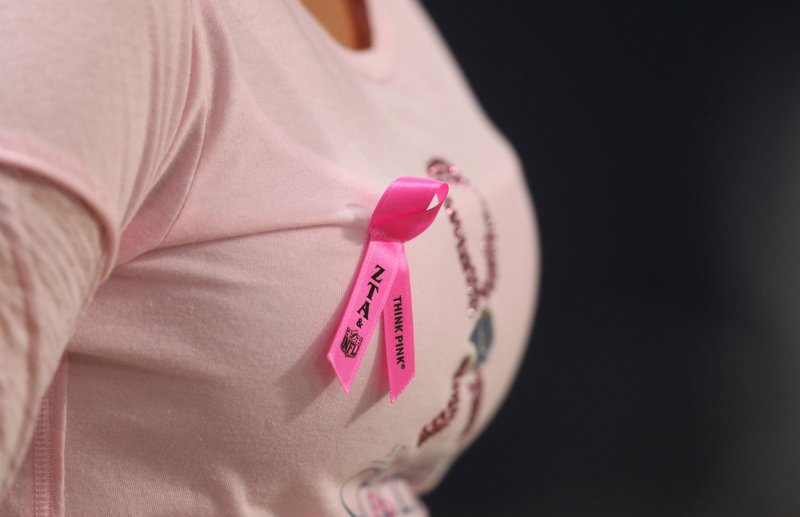A St. Louis Rams cheerleader wears a pink ribbon to recognize Breast Cancer Awareness Month during a game between the Jacksonville Jaguars and the St. Louis Rams at the Edward Jones Dome in St. Louis on October 6, 2013. UPI/Bill Greenblatt |
License Photo
WASHINGTON, Sept. 3 (UPI) -- A new study shows breast cancer survival rates are not decreasing despite the sharp increase in women choosing double mastectomies upon diagnosis.
A study published Tuesday in the Journal of the American Medical Association showed that 12 percent of women chose a double mastectomy -- about one in 10 -- in 2011, an increase from 2 percent in 1998. About a third of women younger than 40 opted for the radical procedure.
"We need to make sure women are informed of all the pros and cons," said aid Scarlett Gomez, a research scientist at the Cancer Prevention Institute of California and Stanford University School of Medicine.
Gomez is concerned about women's access to information about the procedure and other options as the double mastectomy only carried an 81 percent survival rate over 10 years in a sample group of 200,000 women. This is in contrast to the lumpectomy, a far less radical option that involves the removal of a portion of the breast followed by radiation which carried an 83 percent survival rate.
Breast cancer is the most common tumor impacting women, affecting 230,000 this year. It also comes in second to lung cancer in mortality, killing 40,000 women every year.
"When faced with a new breast cancer diagnosis, many patients assume that they will achieve a survival advantage by pursuing the most aggressive surgical strategy," said Lisa Newman, director of the Breast Care Center at the University of Michigan in Ann Arbor.
Factors like race, income and medical conditions can cause discrepancies in survival as well, but Gomez believes all women need to be informed of their options.
"This should be one piece of information that comes into the discussion with providers when women are faced with a very difficult decision," she told Bloomberg. "Hopefully this opens up a richer dialogue doctors can have with their patients."















